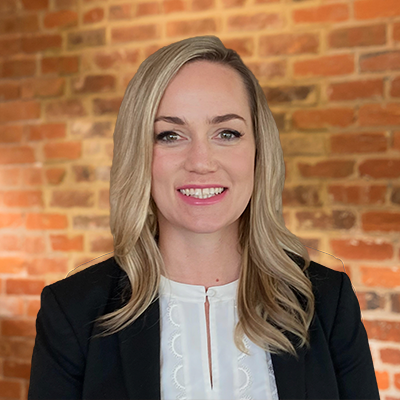For the most part, we find ourselves in the world of negligence when we’re dealing with personal injury cases. This is different from criminal cases, which usually requires proof that someone acted with intent in order to be found guilty.

Intent is much higher on the scale of culpability (or accountability) than negligence is. For example, to receive financial compensation in a car collision case, the injured person (or plaintiff) is not required to prove that the defendant intended to cause the accident. They just have to prove that he or she was negligent, hence causing the accident. This is called causation.
What are the elements of a negligence claim?
Sometimes proving causation is obvious, and other times it is ripe for debate.
First, let’s briefly cover the elements of a negligence claim:
- Duty: There is a legal duty owed to all foreseeable persons who may be injured by the defendant’s failure to follow a reasonable standard of care;
- Breach of that duty: This is when the defendant does not follow a reasonable standard of care, to ensure that no one is hurt
- Causation: The plaintiff must show that the breach was the cause of his or her harm; and
- Damages: The plaintiff must have suffered an actual loss or harm as a result of the defendant’s act.
What are the elements of causation?
Now let’s turn our attention toward that third element: Causation
Example: I negligently damaged the brakes in your car. You are sitting in your driveway and adjusting the car radio. Before you are about to drive, a giant meteorite crushes your car. I am not liable because my negligence did not cause your harm.
Causation has two components:
- Cause-in-fact
- Proximate Cause
What is cause-in-fact?
The first component, cause-in-fact, is fairly straightforward. It means that the plaintiff must show that the injury would not have occurred “but for” the defendant’s negligence. This would be easy to prove in a case where, for example, there is sufficient video covering the incident.
Now, this “but for” test is less simple in other circumstances. For example, if there are several defendants, it cannot be said that one defendant’s wrongful conduct was necessary to cause the harm. And if there are multiple potential causes of the harm, the plaintiff may not be able to prove which defendant caused the harm.
What is joint and several liability?
What do we do when multiple defendants simultaneously contribute to someone’s injury? Well, when the wrongful acts of two or more defendants are each a factual cause of one harm, then joint and several liability applies.
Example: I negligently hang up my laundry on stop sign on a road, covering the stop sign. Someone else negligently drives too fast, right through the stop sign. As a result, a person is hit. Both acts were the cause of the harm. Thus, joint and several liability applies. In this case, both defendants are potentially liable, and the plaintiff can sue either or both defendants and collect all of his or her damages.
What is alternative causation?
What if the plaintiff’s harm was caused by only one of a few defendants (usually two) and it cannot be determined which one caused the harm? In that case, courts will shift the burden of proof to the defendants. Unless the defendants can prove which person or people in their group caused the actual harm, the courts will impose joint and several liability on all defendants.
What is proximate cause?
But causation doesn’t stop there. You also must prove a causal linkage in order to prove liability. Even if someone’s conduct has the potential to cause harm, the connection (or linkage) may be too coincidental or remote to support liability.
Example: I speed down your road and that frightens your dog. He runs into the house. This reminds you to feed the dog. You go to the pantry to get dog food and you slip on a banana peel that your roommate left in the pantry. You break your ankle. I am not liable because the connection between my conduct and your harm is too remote and attenuated.
Thus, proximate cause must be shown. Now, unlike “but for” causation, proximate cause is a more nebulous concept. It’s best to explain it by using the phrase, “scope of liability.” When determining the scope of liability, you must consider if the incident is the type of harm that makes someone negligent.
There is a famous landmark case that created the landscape of proximate cause: Long Island Railroad Co. v. Palsgraf, (1928). It’s the leading case on the question of liability to an unforeseeable plaintiff. It was a hotly-contested case and still continues to be, as some courts follow the majority opinion and others still follow the dissenting opinion. The principle in Palsgraf is that liability for negligence will not be considered unless it was reasonably foreseeable that the conduct would result in injury to the victim.
What are the facts of the Palsgraf case, you ask?
Helen Palsgraf (the plaintiff) was standing on a platform owned by the Long Island R.R. (railroad) (the defendant). While she was waiting to catch a train, a different train bound for another destination stopped at the station. Two men ran to catch the train as it was moving away from the station. One of the men was carrying a package that, unbeknownst to anyone on the platform, contained fireworks. The first man jumped aboard the train safely, but the man with the package had difficulty. Two train employees helped the man get on the train. However, in the process, the man dropped the package. It fell to the rails and exploded, causing several scales at the other end of the platform to dislodge and injure Palsgraf. Palsgraf brought suit against the railroad for negligence.

How did the New York Supreme Court rule? In a very controversial opinion, the majority were in favor of the defendant (the railroad company) and dismissed the complaint. He found that the defendant was not liable because there was no negligence toward the plaintiff. Judge Cardozo explained that the employees, in helping the man aboard, did not have a duty of care to Helen Palsgraf as injury to her was not a foreseeable harm from aiding a man with a package.
The dissent had a lot of say, and many courts still do not agree with the majority opinion. Courts that follow the dissenting opinion in Palsgraf look to a set of factors to determine proximate cause. These factors include:
- Is there a natural and continuous sequence of events between the cause and effect?
- Was one a substantial factor?
- Was there a direct connection without too many intervening causes?
- Was the cause likely to produce the effect?
- Could the defendant have foreseen the harm?
- Was the cause too remote in time?
Instead of following either the majority or dissenting opinion in Palsgraf, some courts use the Substantial Factor Test and combine cause-in-fact and proximate cause together. They instruct the jury that they must find that the negligence was a substantial factor in bringing about the harm.

In Virginia, the court instructs the jury that there can be no recovery of damages for an alleged injury unless the negligence charged as causing such injury was the proximate cause of such injury; that in order to warrant a finding by the jury that negligence was the proximate cause of the injury, it must appear that the injury complained of was the natural and probable consequence of the alleged negligence, that it ought to have been foreseen in the light of attending circumstances. Appalachian Power Co. v. Wilson, 142 Va. 468, 491 (1925).
Simple stuff, huh? Luckily, you’re not left to figure this stuff out on your own. The attorneys at Allen & Allen are well-versed in tort law and can work through these issues of negligence so you’re not left in the dark. If you have been injured in an accident through no fault of your own, call the skilled personal injury attorneys at Allen & Allen. for a free case evaluation, call 866-388-1307.




